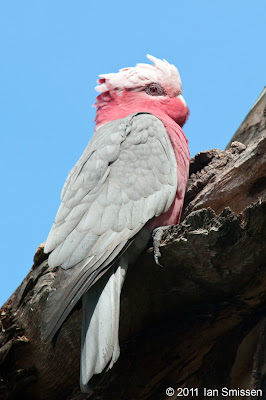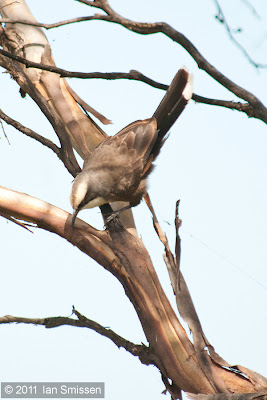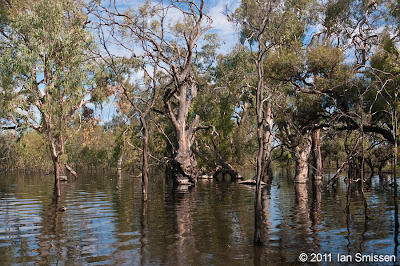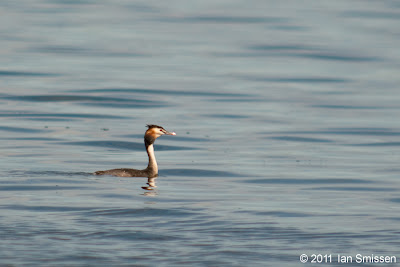Terrick Terrick National Park (view map) is a great place for birds in open woodland and grasslands. By the time I got there it was late morning so not a lot of bird activity but I did get a good walk around and over Mt Terrick Terrick and found this cooperative Galah pair.
Galah (male), Terrick Terrick NP |
Galah (female), Terrick Terrick NP |
I was tempted to hang around longer but was also keen to get to Lake Meran to check it out since the floods had filled the lake. On the way north, I spotted a group of babblers in the roadside vegetation. I find babblers really difficult to photograph as they are almost constantly moving but this one cooperated for a few seconds while trying to extract insects from under the bark on this branch.
Grey-crowned Babbler, Boort-Kerang Road |
Lake Meran is a small permanent freshwater lake (well it used to be until the drought for the last decade) between Boort and Kerang (view map). Floods earlier this year and continuing recent rains have filled the lake
Lake Meran |
A lot of farmland is still covered with water and many of the roads around the Lake and nearby Leaghur State Park are closed still with water covering the road. Photographically accessible birdlife on the lake was limited as much of the activity was taking place in the offshore vegetation and the walking tracks around the lake were under water. However, I did see Nankeen Night-Heron, White-faced Heron, White-necked Heron, Australian White Ibis, Yellow-billed Spoonbill, Pacific Black Duck, Eurasian Coot, Dusky Moorhen, Purple Swamphen, Whistling Kite, Peregrine Falcon. Sadly, there were very few bush birds active (probably courtesy of the Peregrine Falcon) with only Australian Magpie, Magpie-lark and Noisy Miner present around the picnic area.
I did manage to see three Great Crested Grebe in more open water.
I did manage to see three Great Crested Grebe in more open water.
Great Crested Grebe, Lake Meran |





No comments:
Post a Comment
Apologies for the inconvenience but I have had to turn on word verification to avoid spam (I was getting 10-20 a week)
Note: only a member of this blog may post a comment.